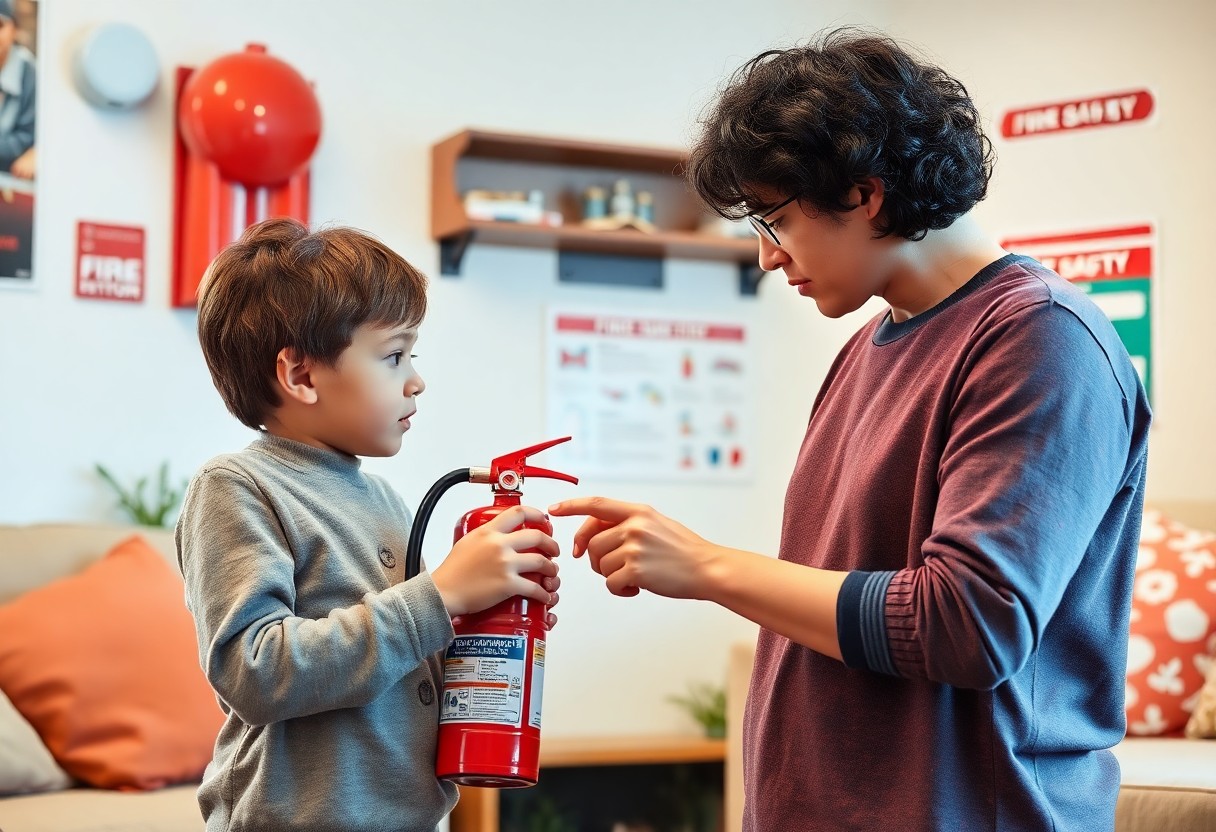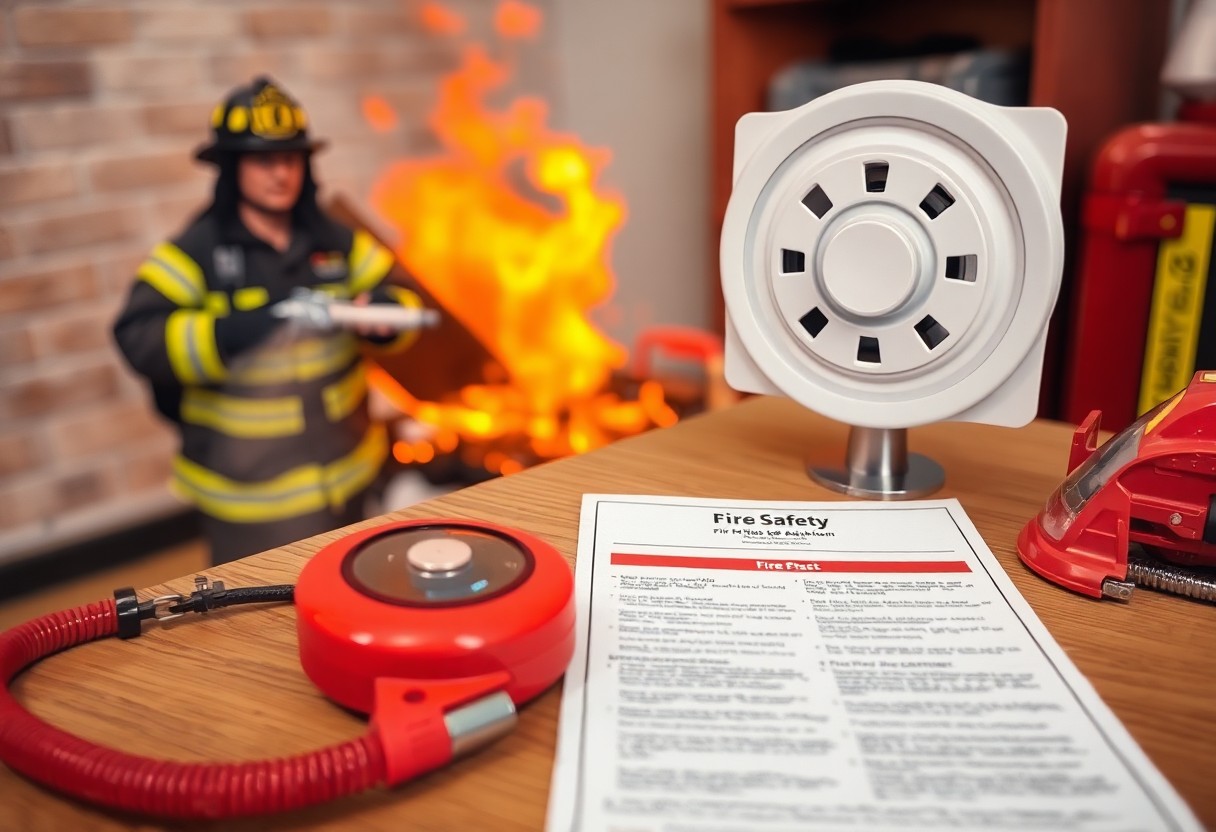You have the important responsibility of ensuring your children understand the basics of fire safety to keep them safe and secure. Teaching your kids about fire hazards, prevention, and emergency procedures can empower them to act wisely in dangerous situations. This blog post will guide you through key concepts and strategies to help educate your children about fire safety, making them more aware and prepared in case of a fire emergency.
The Importance of Fire Safety Education
Your child’s safety should always be a priority, and understanding fire safety is a vital part of that. By educating your children about fire risks, prevention methods, and what to do in emergencies, you empower them with knowledge that could potentially save lives. Early fire safety education creates a foundation for responsible behavior around fire, encouraging kids to think critically and act wisely in dangerous situations.
Understanding Fire Hazards
Around your home, various fire hazards may exist, often going unnoticed. Common risks include unattended cooking, heating appliances, and the improper use of electrical devices. Teaching your children to identify these hazards helps them stay vigilant and reduces the chances of accidental fires. By fostering a proactive mindset regarding fire dangers, you contribute to a safer environment for your entire family.
The Impact of Early Education
Above all, early education on fire safety can have a lasting impact on your child’s behavior and attitudes towards fire. Children who learn about fire safety at a young age are more likely to develop respect for fire and understand its potential dangers. This awareness translates into their everyday actions, promoting safer habits that stick with them as they grow.
Early lessons in fire safety can influence how children approach fire-related situations throughout their lives. By instilling the importance of following fire safety protocols, such as having a fire escape plan and practicing regular fire drills, you prepare them to react calmly and effectively in emergencies. This preparedness not only enhances your child’s safety but fosters a sense of responsibility, making them more aware of their surroundings and the potential risks associated with fire.
Teaching Fire Safety at Home
You play a vital role in ensuring your child’s understanding of fire safety at home. Begin by incorporating fire safety education into your daily routine, making it an engaging and informative experience. Discuss the potential hazards around your home and practice safety measures together. This not only helps instill awareness but also fosters a sense of responsibility in your children regarding fire safety.
Creating a Fire Escape Plan
Fire safety begins with an effective escape plan. Involve your family in creating a route that identifies the quickest exits and designate a safe meeting point outside your home. Practicing this plan regularly ensures everyone knows what to do in case of an emergency, providing peace of mind for both you and your children.
Safe Practices with Fire Sources
Practices surrounding fire sources are vital in maintaining a safe environment. Educate your children about the proper usage of items like candles, lighters, and stoves, ensuring they understand the potential dangers associated with these fire sources. Establish boundaries and clear rules about when and where they can use these items to prevent accidents.
Indeed, teaching your children safe practices with fire sources can significantly reduce the risk of accidents. Explain the importance of never playing with matches or lighter fluid and ensure they know these items are not toys. Encourage them to always notify an adult if they find such items and to stay a safe distance away while using cooking appliances. Reinforce the idea that fire can be both useful and dangerous, instilling a healthy respect for it at an early age.
Engaging Children in Fire Safety
Any parent knows that engaging your children in fire safety education is vital for their understanding and awareness. By making learning fun and interactive, you can instill vital safety lessons that will stay with them for a lifetime. Utilizing creative methods can make the process enjoyable while ensuring that your kids grasp the importance of fire safety.
Interactive Learning Activities
An excellent way to teach your children about fire safety is through interactive learning activities. You can conduct fire drills, create fire escape plans together, or even have fun role-playing scenarios. These activities encourage active participation and allow your kids to practically apply their knowledge in a safe environment.
Utilizing Educational Resources
Safety is enhanced when you utilize various educational resources dedicated to fire prevention and safety. Leverage books, videos, and online games specifically designed for children that cover topics such as fire escape plans and the importance of smoke detectors. These resources can provide age-appropriate insights and foster a deeper understanding of fire hazards in an engaging way.
Consequently, by incorporating educational resources into your fire safety curriculum, you create a well-rounded approach to teaching your children. Resources such as interactive websites, animated videos, and community programs not only lend credibility but also cater to different learning styles. Engaging your children in these diverse materials helps reinforce safety messages and encourages them to take fire safety seriously.
Emergency Procedures
Despite the importance of fire safety, many children are unaware of the procedures to follow during an emergency. As a parent, it’s crucial to educate your kids about how to react calmly and effectively if a fire occurs. Establishing a clear emergency plan and practicing it can empower your children to respond appropriately, ensuring their safety and increasing the chances of a successful evacuation.
What to Do in Case of Fire
For your child, the first step in the event of a fire is to stay calm and alert. They should be taught to use their pre-planned escape routes, avoiding smoke and staying low to the ground. Practicing these steps regularly will help them remember what to do when it counts.
How to Call for Help
An important skill your children need to learn is how to call for help during a fire emergency. Ensure they know the emergency number for your area and can provide crucial information, such as their location and the nature of the emergency.
At home, practice how your kids should call for help, reinforcing the importance of staying on the line until help arrives. You can create a mock scenario where they practice dialing the emergency number and clearly communicating details. This not only builds their confidence but also ensures they can act swiftly and effectively in a real emergency.
Educating About Fire Equipment
For effective fire safety, it’s important to educate your children about the different types of fire equipment. Teaching them how to recognize and utilize this equipment can empower them in an emergency. Discuss various tools, such as smoke detectors and fire extinguishers, and ensure they understand their purpose and operation. This knowledge can help foster a sense of responsibility and alertness towards fire safety in your household.
Understanding Smoke Detectors
Among the most important items in your home, smoke detectors play a vital role in alerting you to potential dangers. Educate your children about how these devices work and the sounds they make. Ensure they know to take action quickly when they hear the alarm, such as exiting the house and notifying an adult. Regular maintenance, like testing the alarms and changing batteries, should also be part of the conversation.
The Role of Fire Extinguishers
The ability to use a fire extinguisher can make a difference in a fire emergency. Discuss with your children the different types of extinguishers and what they’re designed to put out. Emphasize the importance of only using an extinguisher if the fire is small and manageable, and instruct them to get out and call the fire department if the fire escalates.
Equipment designed for fire suppression can be a valuable asset when dealing with small flames. Explain to your children the PASS method—Pull the pin, Aim low, Squeeze the lever, and Sweep from side to side—so they know how to use a fire extinguisher correctly. This practical knowledge not only enhances their confidence but could potentially protect your home and family in the event of a fire. Regularly review how to use extinguishers and encourage hands-on practice under your supervision, ensuring they are prepared should the need ever arise.
Community Resources and Support
Once again, it is vital to emphasize the value of community resources when it comes to teaching your children about fire safety. Local organizations, educational institutions, and fire departments often provide support that can greatly enhance your efforts. Utilizing these resources can help create a more comprehensive fire safety education for your family, ensuring that children understand the dangers and know how to respond in emergencies.
Involving Local Fire Departments
For an engaging way to teach your children about fire safety, consider reaching out to your local fire department. Many fire departments offer programs designed specifically for kids, where firefighters come into schools or community centers to provide interactive lessons on fire prevention and emergency response. These experiences can make fire safety more relatable and memorable for your children.
Community Workshops and Programs
Programs aimed at community fire safety can be tremendously beneficial for you and your family. These often include workshops and educational sessions that cover vital topics such as fire prevention, escape plans, and how to use fire extinguishers. By participating, you can encourage your children to ask questions and engage actively in discussions about fire safety.
Departments frequently host these workshops throughout the year, allowing families to participate and learn together. This hands-on approach helps reinforce the lessons learned at home and establishes a community-wide focus on safety. It’s an opportunity for your children to ask questions in a safe environment and practice skills that can save lives. Engaging with these programs fosters a collective responsibility for fire safety, further enriching your children’s understanding of this important topic.
To wrap up
So as you teach your children about fire safety, it’s necessary to equip them with the knowledge and skills they need to stay safe in potentially dangerous situations. Engage in conversations about fire prevention, demonstrate how to escape safely, and practice fire drills regularly. By fostering an understanding of fire hazards and emergency procedures, you empower your children to react calmly and responsibly if faced with a fire emergency. Your proactive approach can significantly enhance their safety and instill lifelong habits to keep them secure.


